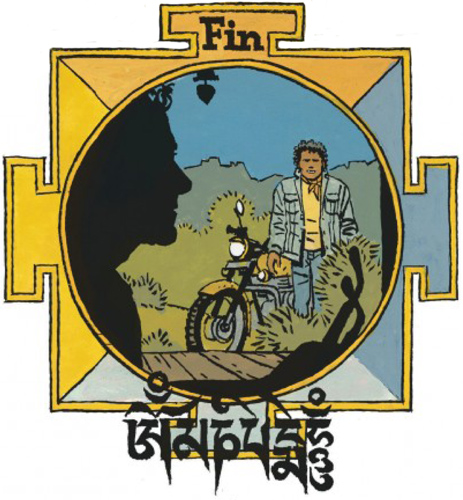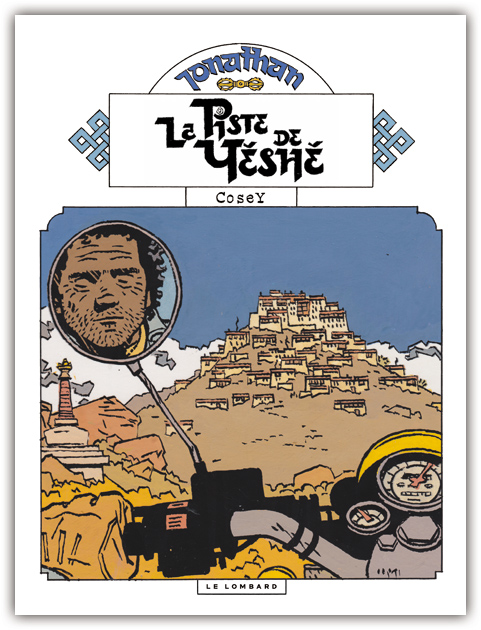
2021
Le Lombard
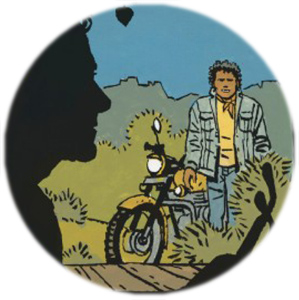
Interview with Cosey about Jonathan 17: click here
This is the end
The previous Jonathan album, ‘Celle qui fut’, was announced as the final Jonathan album, the album that would close the loop from the first album to the last and back. However, Cosey was not satisfied with the way it ended.
Re-reading the text he wrote for the Journal Tintin in 1975 to introduce Jonathan (a text that is reprinted at the start of ‘La Piste de Yéshé’) gave him an idea for a conclusion that fitted better to the character of Jonathan and the character of the series.
A double ending
This 17th album of Jonathan has a vintage Cosey ending: an epilogue. It is not explicitly named ‘Epilogue’, but the story of the album seems to be finished, and then Cosey adds three pages – almost without text – that give the album (and the series) a conclusion with an emotional knock-out (forgive me for using this word, but I am a fan).
Epilogues – whether explicitly named or not – are a hallmark of Cosey’s storytelling.
‘A la recherche de Peter Pan’ has the first of Cosey’s epilogues. The alpine story has ended dramatically with an avalanche and we see Melvin Woodworth walking from the scene of disaster, lonely and sad. We turn the page… and we are met with three happy pages, brightly coloured. Cosey blows some light air to us readers and we can close the album, relieved at the happy end.
The end of ‘Le voyage en Italie’ works the other way around. After the word ‘Fin’, the story continues for almost two pages with one of the unhappiest endings Cosey ever wrote. On top of a story that ends sadly, Cosey adds a layer of extra sadness – a possible happy end that goes wrong.
The last ten pages or so of ‘Le Bouddha d’Azur’, to me, have always felt like an epilogue. The character, the tempo and tone of these pages are very different from the Tibetan story. Here also, Cosey reassures us: the Tibetan story ended in drama and loneliness, the american epilogue shows that all ends well and, miraculously, Gifford and Lhahl find each other.
Cosey also adds a happy epilogue in ‘Minnie – Le secret de Tante Miranda’. In this case, a happy end is followed by a happy epilogue (and after that, a receipe for a cake). Can you end a story on a higher note?
Back to this 17th Jonathan album.
In his introductory text of 1975, Cosey presents Jonathan as a boyhood friend who left for the Kilimandjaro, but ended up in Tibet. Jonathan is presented as a real person, who keeps Cosey updated about his adventures. At the end of ‘La Piste de Yéshé’, Cosey (‘C.’) talks to us readers directly – telling us that he wrote the stories of Jonathan based on the notebooks Jonathan sent him and filling in the blank spots with his imagination (like a comics reader fills up the blank spots between the images?).
A good ending in itself, but then Cosey adds these three extra pages that finally bring creator and creation together – a homecoming that needs no words.
How to end a comics series?
It is not given to many comics authors to end their series in a way and at a time of their own choosing.
First, most series don’t live long: most are ended after only a few volumes, due to low sales. Even long running series are often stopped due to decreasing sales. There are also series that have been conceived as a cycle of a few volumes – but I will be talking here about the good old classic series that seem to go on forever.
Some of these series die with their author: think of Tintin (Hergé) or Gaston (Franquin). Only the very great have ‘unfinished’ posthume work published after their deaths (like Hergé: Tintin et l’Alph-Art).
Few series are continued after the death of their creator – only the best selling series remain alive (Lucky Luke, for instance). Some of them were handed over to new artists during the lifetime of their original authors (think of Astérix; Spirou was even handed over several times). A special case can be made for Blake & Mortimer (by Jacobs): his longtime unfinished ‘Les 3 formules du Professeur Sato’ was finished after his death (by Bob de Moor) and since then, several teams of artists have been working on new stories at the same time.

Charles Schulz, creator of Peanuts (Charlie Brown, Snoopy, etc) ended his daily comic strip with a letter to his readers. He wrote and drew his daily comic strip for almost 50 years. Schulz was diagnosed with cancer in November 1999 and announced that he had to stop drawing in December 1999. His last strip, of January 3rd, 2000, is shown above – a day after his passing (on February 12th, 2000), it was republished in a extended, coloured version.
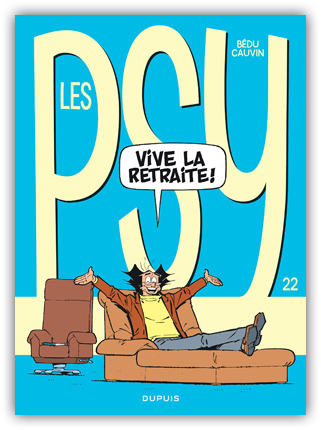
A few years ago, Dupuis announced it would stop some of its series, due to decreasing sales figures. The authors were offered the opportunity to make one or two final volumes. Three of these series were written by scenarist Raoul Cauvin. The series ‘Psy’ (drawn by Bédu) was closed by a volume called ‘Vive la retraite’ (‘Long live retirement’). Raoul Cauvin died last August and I don’t know if the other series will also have some kind of conclusion.
So, it is indeed very rare that authors end their series at a moment of their own choosing.
It brings us to… Derib. One time tutor of Cosey, who learnt the job of comics making in Derib’s studio, Derib finished his series ‘Buddy Longway’ in 2006 (after 34 years), in volume 20, ‘La Source’. A quite rare characteristic of the Buddy Longway series, is that the characters get older over time. But Buddy and his wife Chinook don’t die of old age: they are murdered by a revengeful indian, Cheval Fougueux.
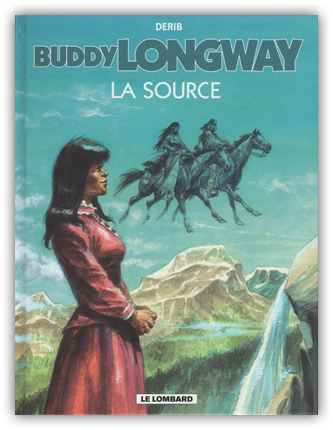
Where Derib conceived the Buddy Longway-series as a series that would have an end, Cosey did not even think of creating a series when he wrote his first story about Jonathan, 46 years ago.
In my interview with Cosey, he tells me he is grateful to have had the opportunity to close the Jonathan series with a conclusion that fits the character. Looking at the usual ways how comics series come to an end, he has every reason to be grateful indeed!
Also, we readers can be grateful for having this final chord to this great series. We are left with 17 albums that we can re-read forever. Thank you, Bernard Cosey!
And last but not least, Jonathan can be grateful for this conclusion. Unlike Buddy Longway, he survives his series.
